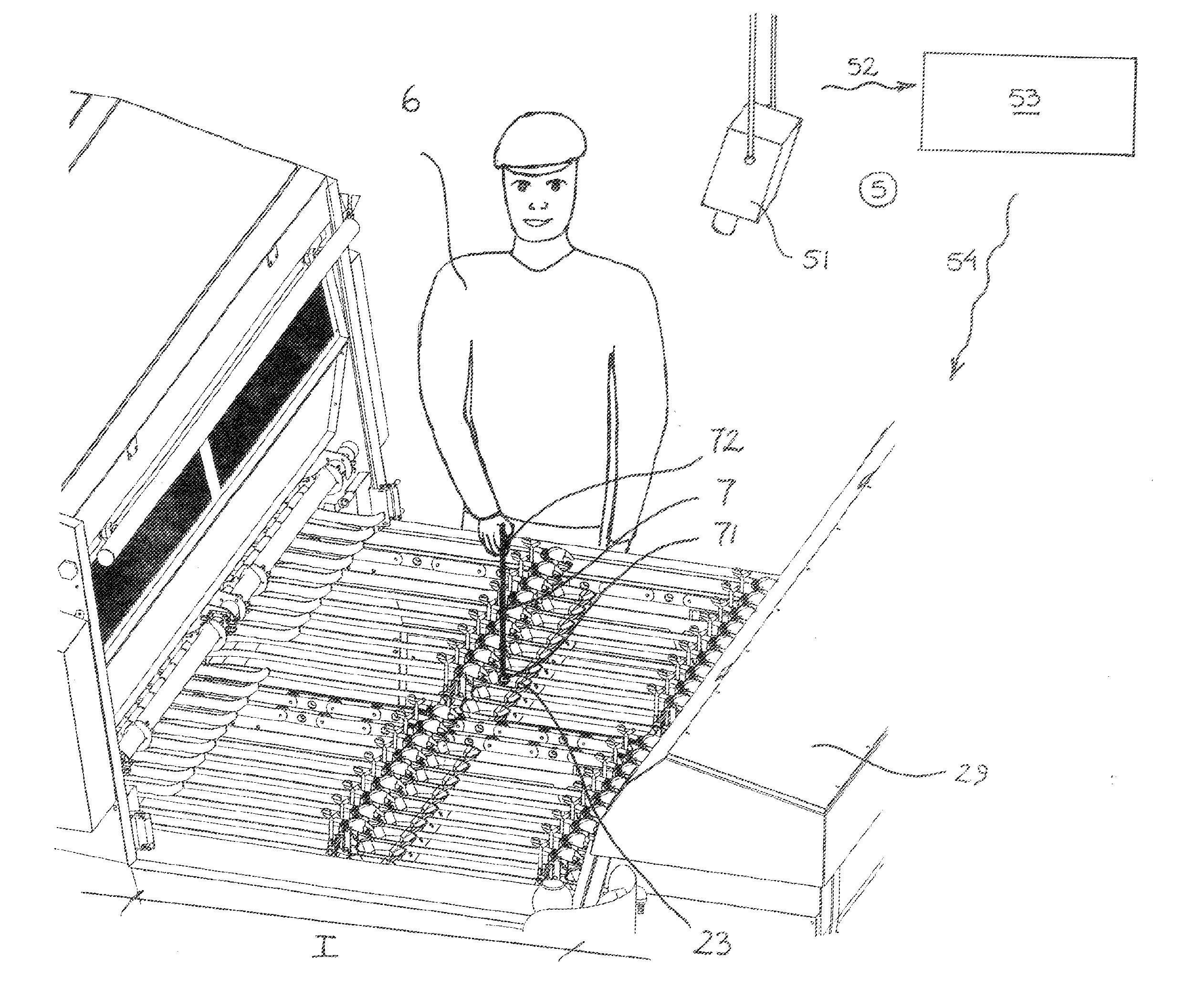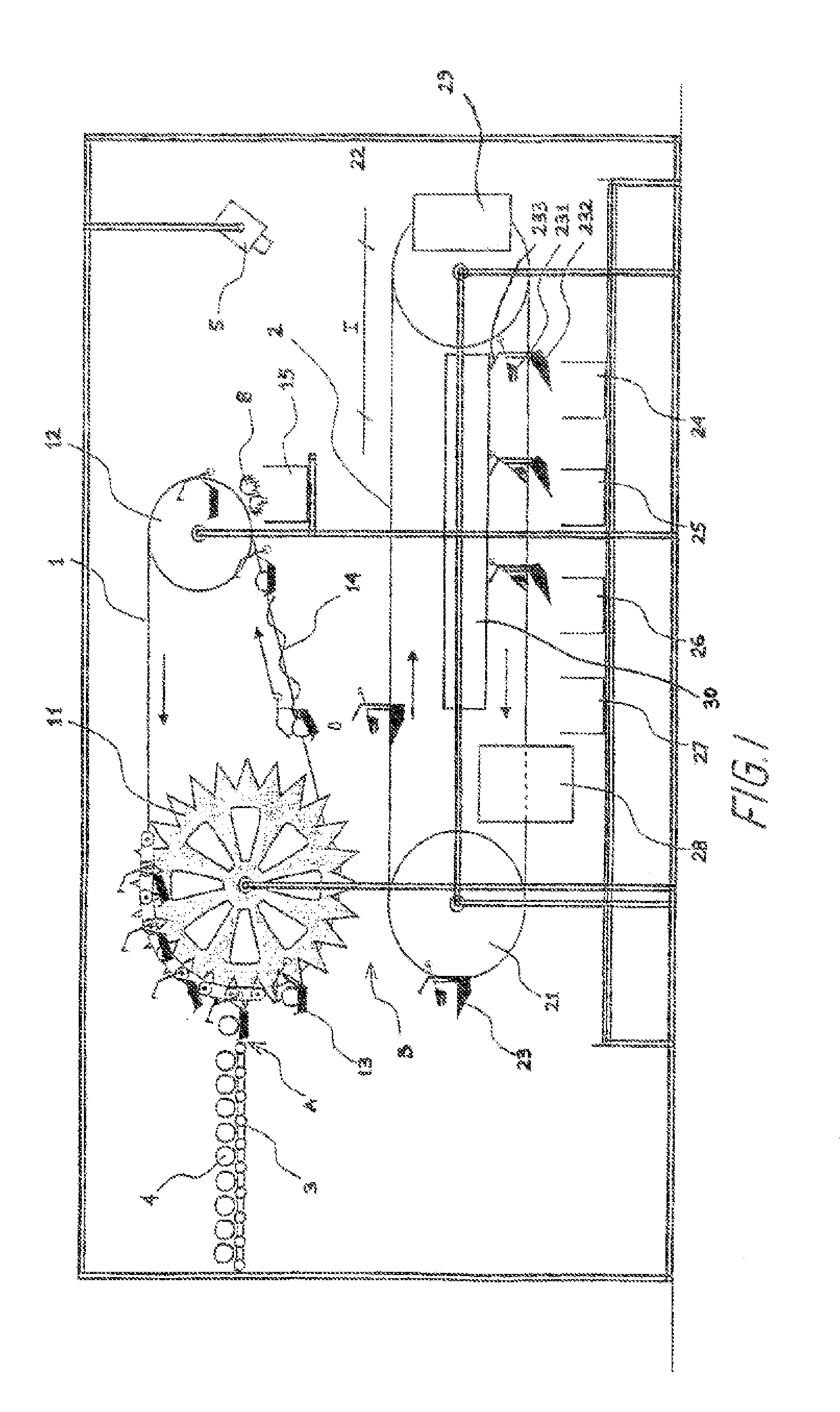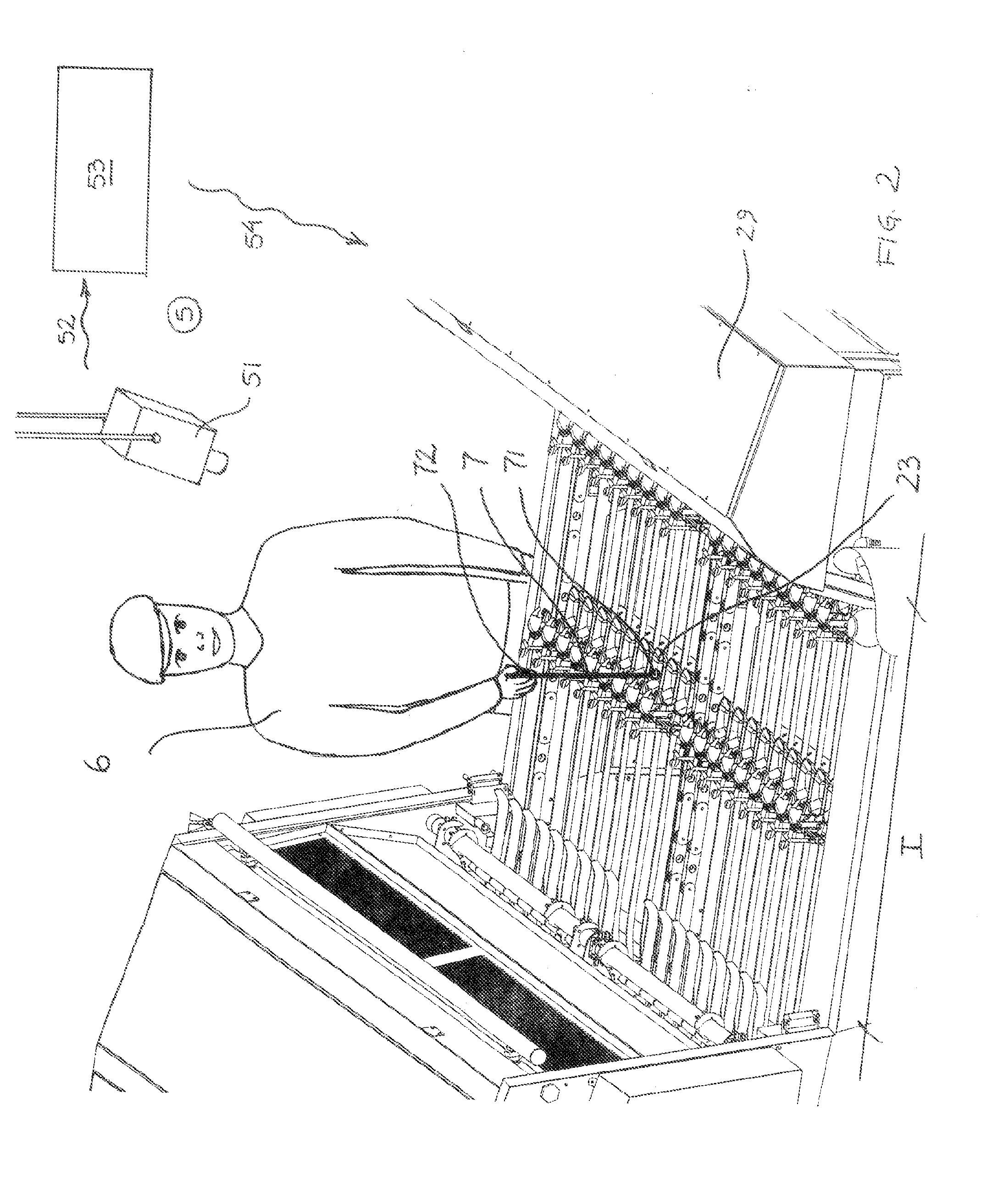Method of monitoring breaking eggs by an egg breaking apparatus in a cyclic process
a technology of breaking apparatus and breaking process, which is applied in the field of monitoring the breaking of eggs in a cyclic process by an egg breaking apparatus, can solve the problems of increasing the work difficulty of operators, and achieve the effects of less sensitive to disturbance, easy to tell, and reduced risk of disturban
- Summary
- Abstract
- Description
- Claims
- Application Information
AI Technical Summary
Benefits of technology
Problems solved by technology
Method used
Image
Examples
Embodiment Construction
[0031]A sketch of a typical egg breaking apparatus as known from WO2007 / 095943, U.S. Pat. No. 5,858,434, U.S. Pat. No. 5,613,429 and WO89 / 05097 is shown in FIG. 1. The apparatus comprises two separate chains 1, 2 mounted on toothed turning wheels 11,12,21,22, where the uppermost chain 1 carries a plurality of egg breaking devices 13 and the lowermost chain 2 carries a plurality of egg receiving devices 23. Even though only a few egg breaking and receiving devices are shown on the respective chains, it is to be understood that in practise the number of devices on each chain are larger such that they are evenly spaced with substantially the same mutual distance on both chains. Similarly, even though FIG. 1 shows only a single row of egg breaking and receiving devices it is to be understood that each of these devices may represent a column of devices extending perpendicularly to the plane of the drawing. Such columns may be mounted on horizontal bars stretching between two parallel cha...
PUM
 Login to View More
Login to View More Abstract
Description
Claims
Application Information
 Login to View More
Login to View More - R&D
- Intellectual Property
- Life Sciences
- Materials
- Tech Scout
- Unparalleled Data Quality
- Higher Quality Content
- 60% Fewer Hallucinations
Browse by: Latest US Patents, China's latest patents, Technical Efficacy Thesaurus, Application Domain, Technology Topic, Popular Technical Reports.
© 2025 PatSnap. All rights reserved.Legal|Privacy policy|Modern Slavery Act Transparency Statement|Sitemap|About US| Contact US: help@patsnap.com



